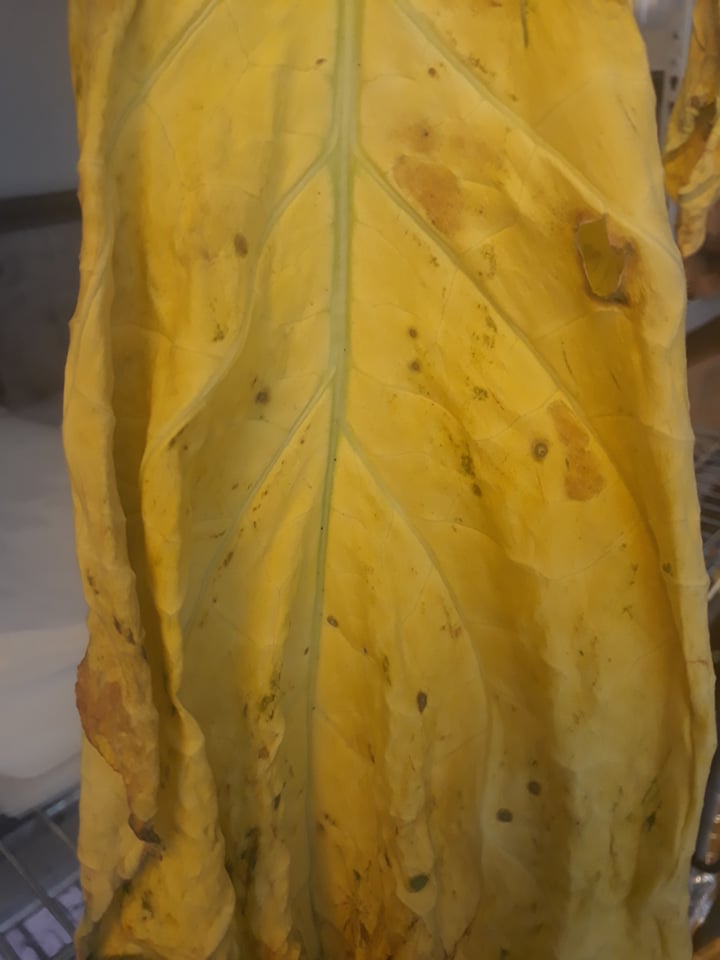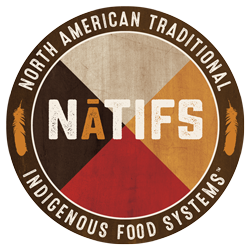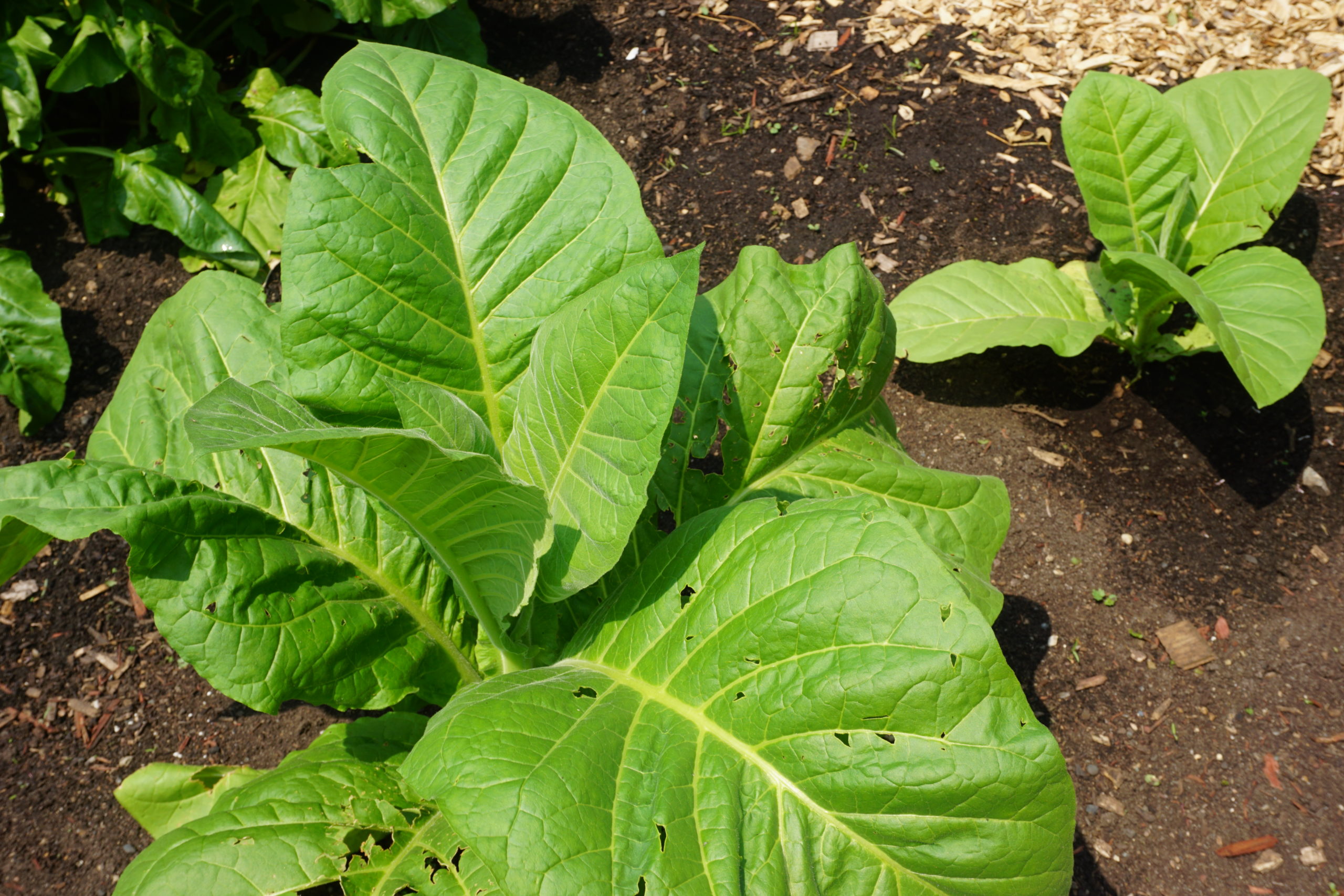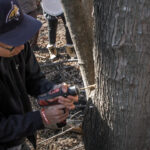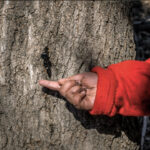Tobacco is a very hardy plant that enjoys lots of heat but not humidity – if the plant is too wet it can become weak and thin. It can get to around seven feet tall when fully grown depending on the variety. In our community garden this summer we have been trying our hand at growing some native varieties of tobacco and after growing them successfully, we are finally at the curing process.
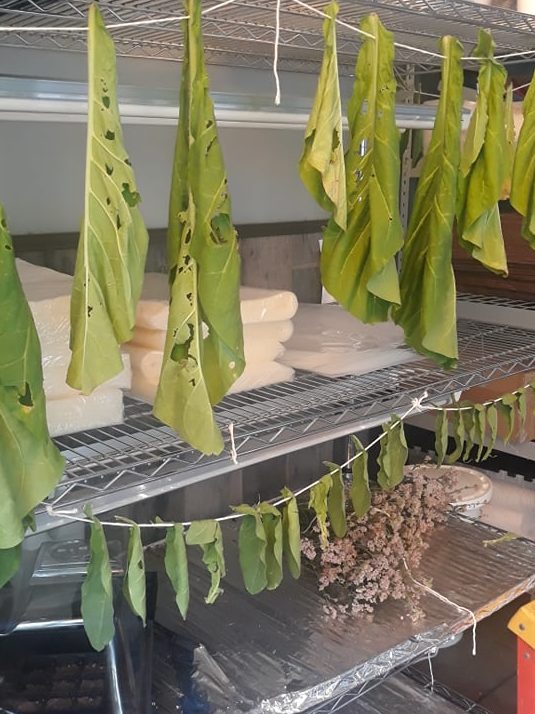
Our garden manager Louis says the process of curing tobacco leaves is not as difficult as big tobacco enterprises would have you think. The fully grown leaves are cut from the plant, but be careful when harvesting as nicotine can enter the skin on your hands and cause nicotine poisoning. Then a small slit is made near the base of the harvested leaves so that a string can be fed through so the leaves hang down as they dry.
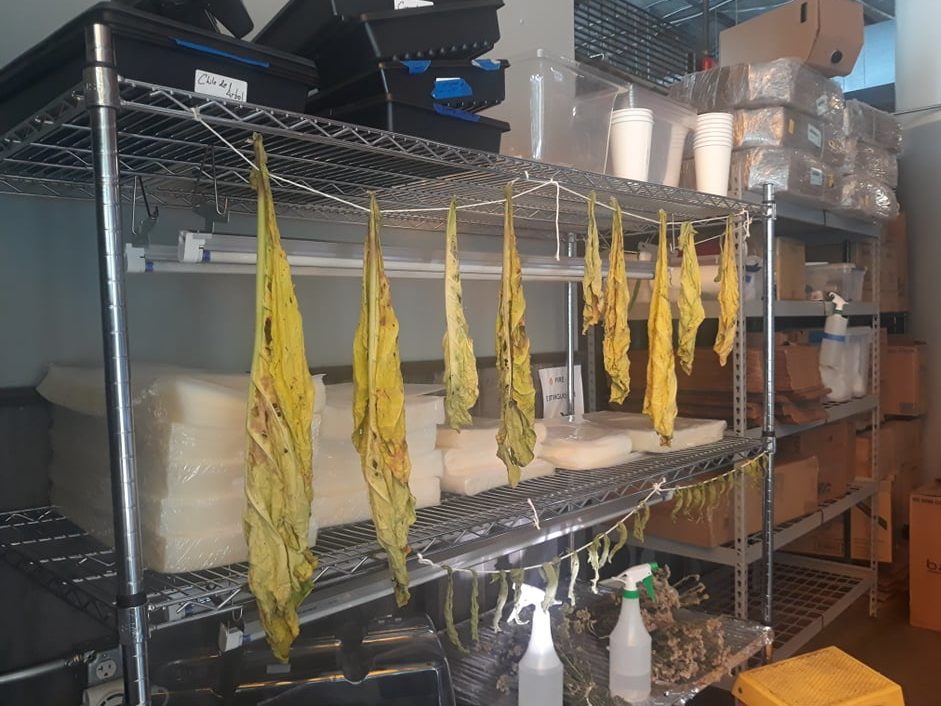
The main difference between just drying and curing is that curing involves a moderately controlled environment – it takes a little more attention than just leaving the leaves sit out to dry. You don’t want the leaves going moldy or brittle and finding that sweet spot in between is key. We have ours hanging in a semi-controlled environment where our seedlings once were in the IFL. We mist the leaves with water everyone and then so they don’t become too brittle as the building is fairly dry.
The main objective is to get rid of the chlorophyll in the leaves and the aroma comes from the curing process. This process can take anywhere from two months to two years depending on who you talk to. Ours has been hanging in the IFL for about two weeks now and we are just taking it day by day.
